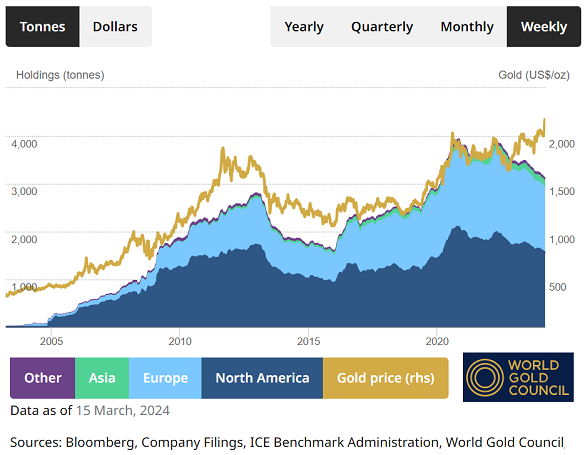"Nevertheless, this jump illustrates the power of investment flows while confirming our positive outlook for the metal. To be sustainable, higher prices need more fundamental support. That, we think, is already evident from real rates and physical demand."
Typically showing a strongly negative correlation against the price of gold, real interest rates – as tracked by the yield on inflation-protected US Treasury bonds – today slipped back below 2.00% per annum as the price of 10-year TIPS edged higher ahead of the Fed.
That was the highest real yield on US government debt since New Year 2009 when reached last August, but it remains half-a-point below October's 15-year high, touched as gold prices rallied from their lowest point of last year at close to $1800 per Troy ounce.
Here in March, "[China's gold buying] tails away slightly," says bullion-market specialist Rhona O'Connell at brokerage StoneX, pointing to the drop in Shanghai gold premiums over London quotes down towards $20 per ounce.
That's barely 1/5th the record incentive for new bullion imports into gold's No.1 consumer nation hit last autumn as
China's private-sector gold demand leapt amid the country's worsening financial slump. But it's still twice the historical average Shanghai premium, signaling the Chinese market's continued buying more than a month after the busy Lunar New Year 2024.
"India [is] also currently quiet," says O'Connell. But it "is likely to build interest ahead of Akshaya Tritiya" – the Hindu spring festival now widely promoted as an auspicious time to buy gold – falling this year on Friday 10 May, midway through the
world's most populous economy's national elections.
Demand for gold from central banks meantime remains "resilient" near its recent 8-decade highs, as Sun at Lombard Odier says, with latest data showing further accumulation already reported for February by China, India, Turkey, the Czech Republic and
Kazakhstan.
"A primary reason for this is to diversify foreign currency reserves in a changed geopolitical landscape after Western governments imposed sanctions on Russia and froze dollar assets," Sun goes on.
"This trend looks likely to continue...Since gold reserves only account for 5% of central banks' total reserves, there is ample potential strategic demand in the coming years."




